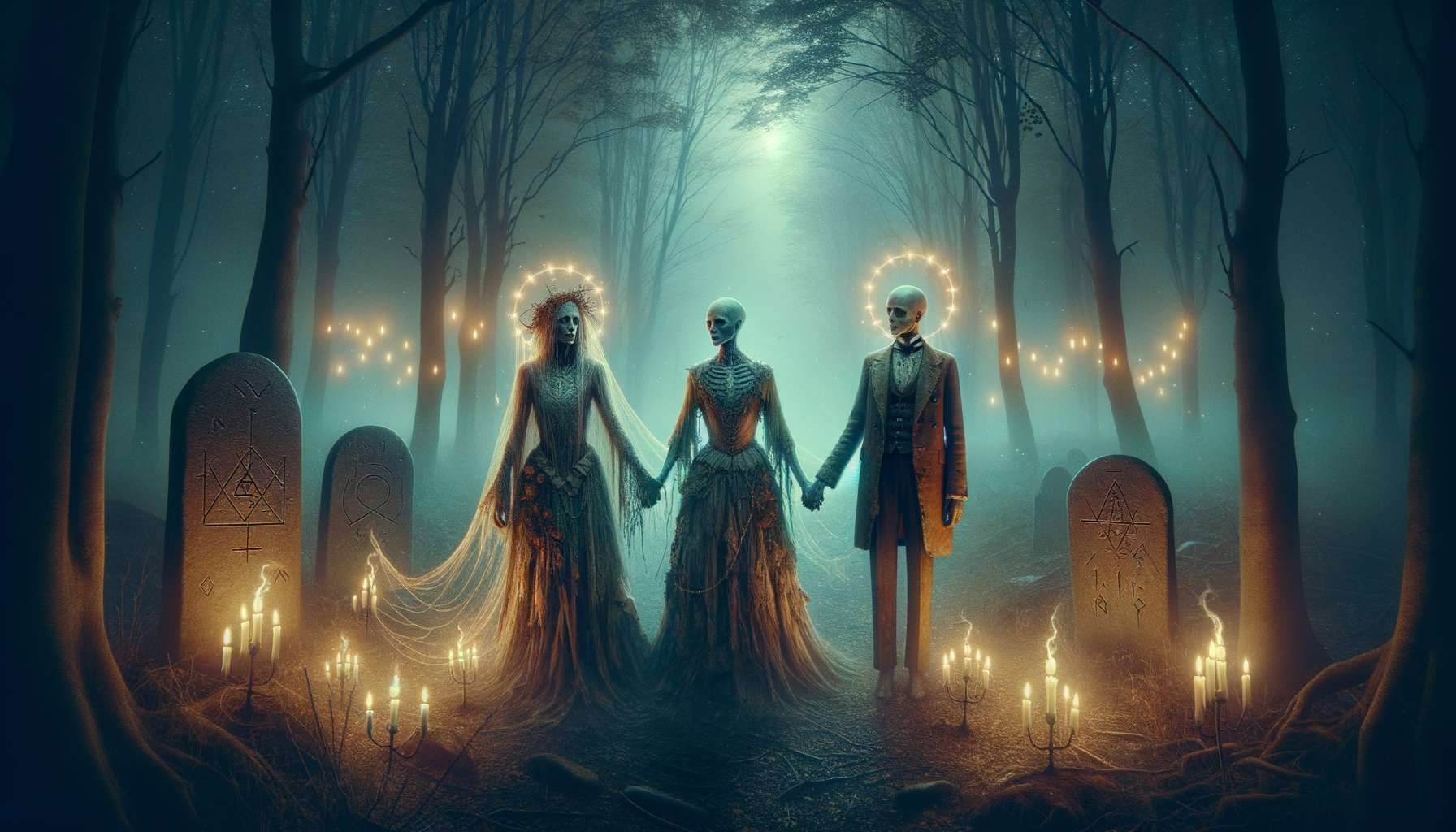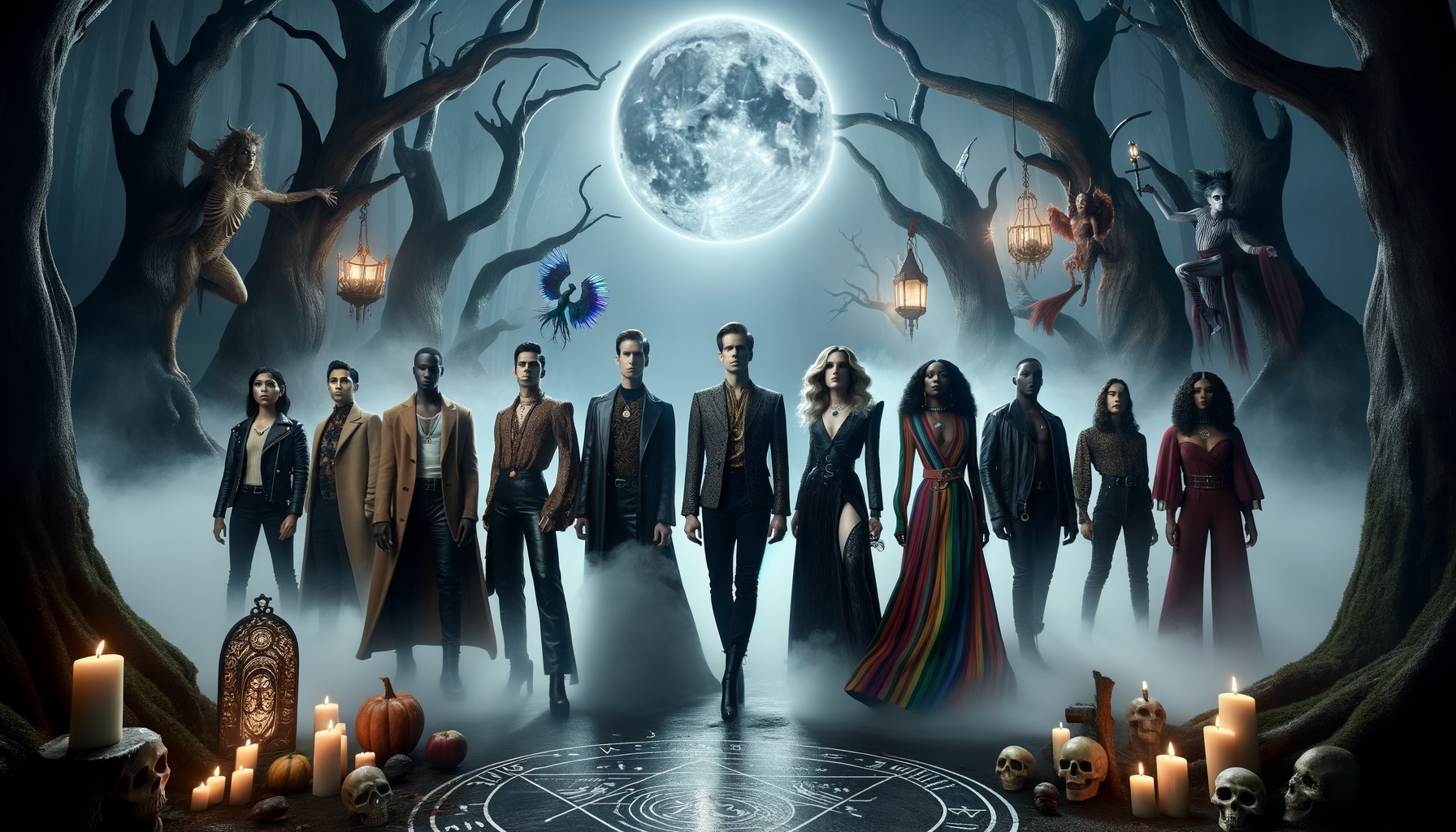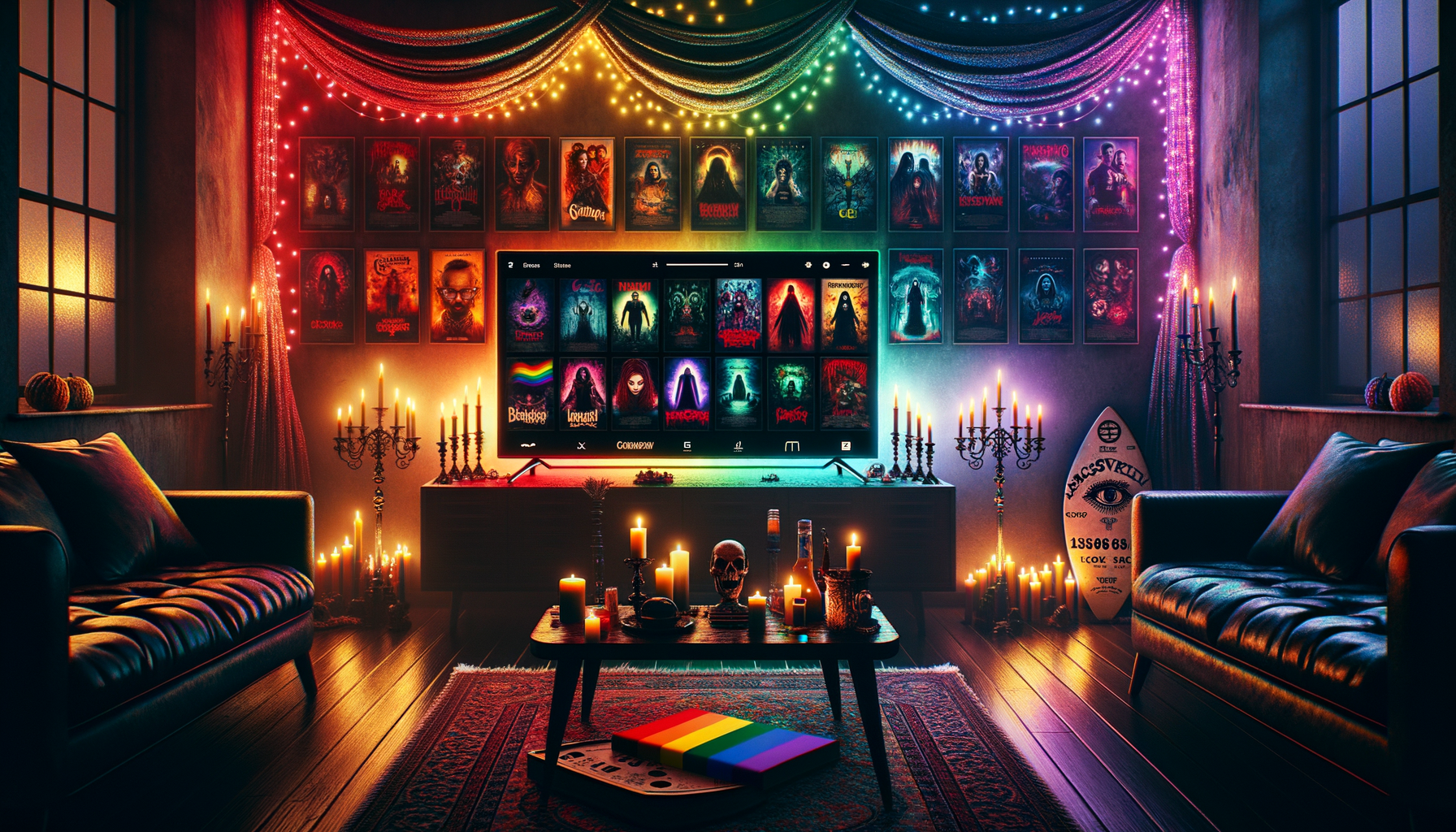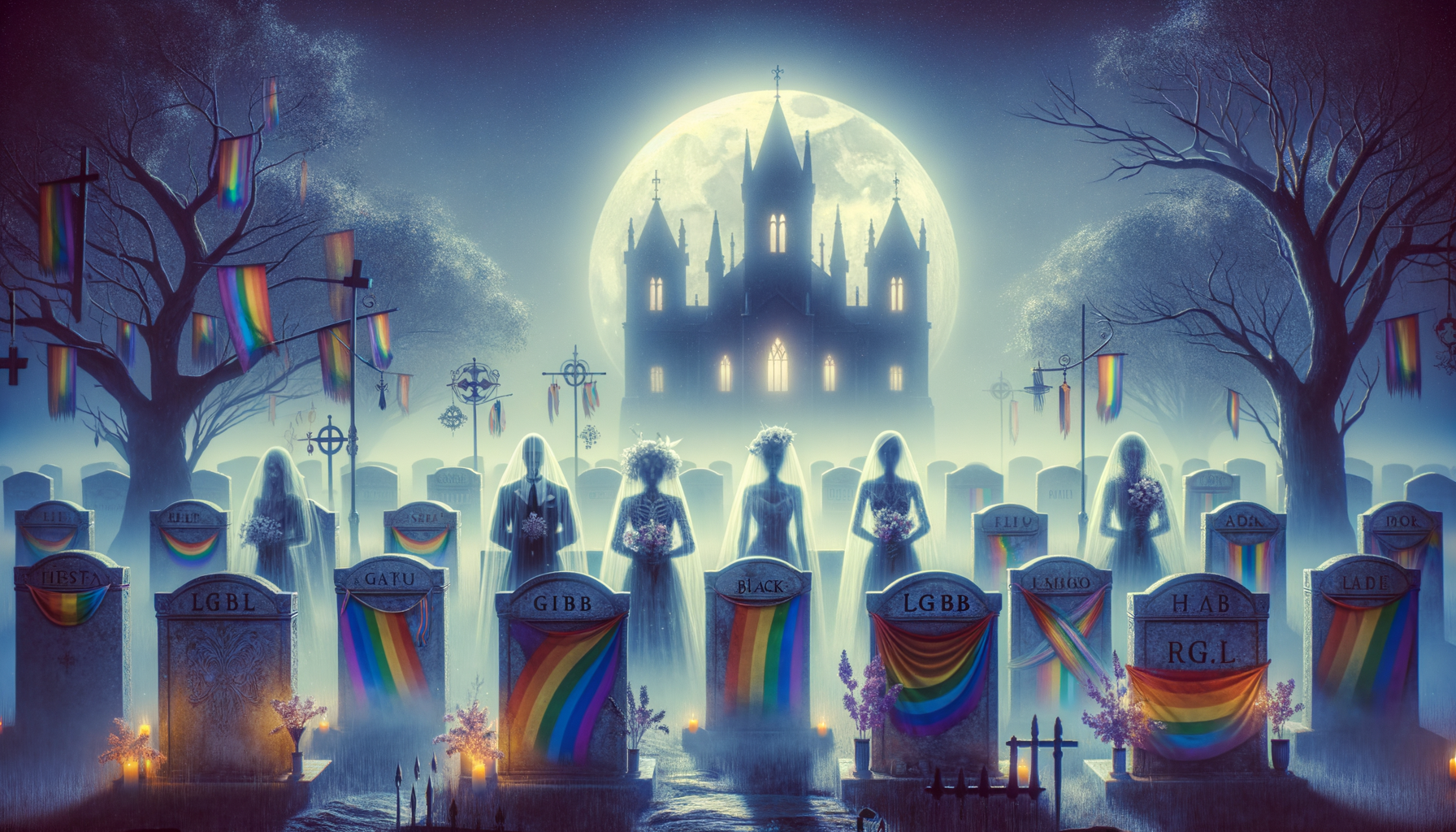Welcome, horror enthusiasts and folklore aficionados! Have you ever wondered how LGBT themes are woven into the eerie world of folklore? From spine-chilling legends to haunting myths, the intersection of LGBT narratives and horror folklore offers a deep well of stories that not only scare us but also resonate on a deeply human level.
A fascinating statistic to kick things off: Recent studies show a 150% increase in the exploration of LGBT themes in horror literature and film over the past decade. This article aims to unravel these dark and captivating tales, shining a light on stories that have lingered in the shadows for too long.
Historical Roots of LGBT Folklore in Horror
Ancient Mythologies
In various ancient cultures, queer deities and spirits played significant roles. These figures often embodied dualities and fluid identities, challenging the norms of their societies. For instance, in Hindu mythology, Ardhanarishvara, a deity combining both masculine and feminine aspects, symbolizes the unity of opposites. Similarly, the Greek god Dionysus, known for his androgynous appearance, was often associated with themes of transformation and fluidity.
Medieval Europe
During the Middle Ages, LGBT individuals faced severe persecution, which led to the creation of folklore that both demonized and celebrated them. Tales of witches and heretics often included accusations of same-sex relationships, reflecting societal fears and prejudices. However, these stories also hinted at hidden communities and secret gatherings, suggesting a subculture that existed beneath the surface of mainstream society.
Colonial Folktales
In Native American cultures, stories of two-spirit individuals—people who embody both masculine and feminine qualities—were integral to tribal folklore. These individuals were often revered and considered to have special spiritual roles. The arrival of European colonizers, however, brought about a dramatic shift in attitudes, leading to the marginalization of these once-respected figures.
Prominent LGBT Characters in Folklore
Legends and Their Contexts
Some queer figures have become iconic within horror folklore. The Banshee, a female spirit in Irish mythology, is often interpreted through a queer lens due to her outsider status and mournful cries. Similarly, the Glaistig, a Scottish fae with both nurturing and vengeful aspects, can be seen as a representation of complex queer identities.
Queer Monsters and Anti-Heroes
Monstrous personas in folklore frequently reflect the struggles faced by LGBT individuals. Vampires, werewolves, and other shape-shifters embody themes of transformation and hidden identities. These creatures often live on the fringes of society, much like marginalized LGBT communities, and their stories resonate with themes of acceptance and self-discovery.
Modern Interpretations
Contemporary storytellers have reinterpreted these classic characters, infusing them with modern sensibilities. By doing so, they highlight ongoing struggles and celebrate the resilience of queer communities. These reinterpretations often challenge traditional narratives, offering fresh perspectives and deeper understanding.
LGBT Folklore in Horror Literature and Films
Classic Works
Pioneering works such as “Carmilla” and “Dracula” incorporate elements of LGBT folklore. “Carmilla,” with its central theme of a female vampire’s affection for her victim, is one of the earliest examples of lesbian themes in horror literature. “Dracula,” while less overt, contains undercurrents of homoerotic tension, particularly in the interactions between the titular vampire and his male victims.
Modern Media
Recent books and films continue to explore and spotlight queer horror folklore. Works like “The Haunting of Bly Manor” and “The Hunger” delve into complex queer relationships within a horror context, offering nuanced portrayals that resonate with contemporary audiences.
Influential Writers and Directors
Celebrating the storytellers who navigate these narratives is essential. Writers like Clive Barker and directors such as Jennifer Kent have made significant contributions to the genre, using horror to explore themes of identity, acceptance, and resistance.
Cultural Impact and Social Commentary
Reflection of Society
LGBT folklore in horror often mirrors societal views and changes. These stories can act as a barometer for public attitudes toward queer communities, reflecting both progress and ongoing challenges. By examining these tales, we gain insight into the broader cultural landscape.
Empowerment through Horror
Horror folklore can also be a source of empowerment. Stories of resilience and bravery within LGBT communities highlight the strength and courage required to navigate a world that often marginalizes them. These narratives serve as both inspiration and affirmation for those who see themselves reflected in the characters.
Controversies and Discussions
Debates surrounding representation in horror folklore are ongoing. While some argue that certain portrayals reinforce negative stereotypes, others believe that these stories provide crucial visibility. Engaging in these discussions is vital for evolving the genre and ensuring more inclusive representations.
Lesser-Known LGBT Folklore Stories
Regional Tales
From around the world, eerie stories featuring LGBT themes offer a rich and diverse tapestry of folklore. These regional tales often highlight unique cultural perspectives and contribute to a broader understanding of queer identities.
Hidden Gems
Uncovering rare and forgotten queer folklore can be a rewarding endeavor. These hidden gems offer fresh narratives and challenge mainstream interpretations, enriching the overall landscape of horror folklore.
Reader Contributions
Engaging the audience with personal folklore stories they know can add depth and authenticity to the conversation. By sharing these tales, readers contribute to the ongoing preservation and celebration of LGBT folklore in horror.
Conclusion
As we draw this spectral exploration to a close, it’s clear that LGBT folklore in horror not only enriches the genre but also provides vital representation for marginalized voices. From age-old legends to contemporary films, these stories continue to captivate and terrify. Interested in discovering more spine-chilling tales or sharing your own? Join our community of horror aficionados and delve into the darkest corners of folklore today! Stay spooky, friends.




